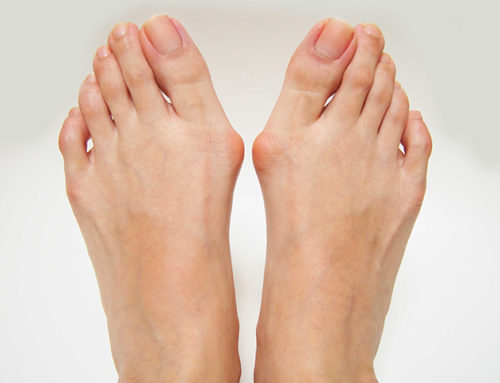Plantar heel pain: an urgency to treat.
In my previous blog, I discussed the myth promoted by many authors of authoritative articles discussing plantar heel pain with a promise that “conservative treatment is successful 90 percent of the time.”1 These conservative measures usually include rest, stretching, physical therapy, shoe inserts, nonsteroidal anti-inflammatory drugs (NSAIDs) and corticosteroid injections.2-5 Most of these authorities do not provide a timeline or criteria for determining “successful” treatment for relief of plantar heel pain.
Whether it is home-based or implemented by a clinician, conservative treatment of plantar heel pain does not have a 90 percent success rate within a 12-week time frame.6 Hansen and coworkers further verified this in a study that followed 174 patients 10 years after their plantar fasciitis diagnosis.7 Despite receiving an average of 3.8 different treatments, 45 percent of the patients were still symptomatic after 10 years. This study showed that when patients wait more than eight months to seek professional treatment for plantar heel pain, there is a significant impact on their prognosis for successful conservative treatment.7 The patients who eventually did become pain-free with conservative treatment had their symptoms for an average of 256 days before seeking treatment while those who remained symptomatic for 10 years had their symptoms for an average of 365 days before obtaining professional care.
Therefore, one reason for failure of conservative treatment of plantar heel pain is the fact that most patients do not seek immediate treatment. One can verify this when looking at studies on the prevalence of plantar heel pain and then comparing these prevalence rates to studies showing the actual number of visits to medical professionals made by patients with this condition.
Plantar heel pain is one of the most common conditions of the foot and ankle, affecting 10 percent of all people during their lifetime.8 The actual prevalence of plantar heel pain in the general population is reportedly between four and nine percent.9-12 However, this condition is likely far more prevalent as studies indicate that the majority of people with plantar heel pain do not seek medical treatment. In short, the prevalence of heel pain in the general population is not mirrored by the frequency of visits to health-care professionals for treatment of this condition.
For example, out of 855 million patient visits to doctors in the United States, only 0.12 percent were associated with a diagnosis of plantar fasciitis.13
A study in southwestern Australia mirrors these findings, documenting that only 1.9 percent of visits to primary care doctors were for treatment of plantar fasciitis.14 Therefore, only one out of 10 patients with plantar heel pain appear to seek professional treatment as evidenced by these studies.8,13,14 On the other hand, a study done in the United Kingdom, where most patients have access to a government sponsored health-care system, 62 percent of patients with plantar heel pain consulted a health care professional for treatment.12
In the United States, a study of 75,000 people revealed that the prevalence of plantar fasciitis with current pain was 0.85 percent.13 This prevalence, however, required a diagnosis from a health-care professional so the overall incidence of plantar fasciitis was probably much higher within this patient population. What is interesting to note from this study is that while 40 percent of patients first sought medical treatment for their plantar fasciitis within the past year, 50 percent did so at least three years previously and still had pain. This study indicated that many patients, once diagnosed with plantar fasciitis, will go on to suffer chronic symptoms for several years.
Recognizing The Potential Psychological Impact Of Chronic Heel Pain
In terms of the false promise that plantar heel pain will resolve within 10 months with conservative treatment, consider the emotional toll this takes on the patient when this promise fails. What is the effect of consistent morning pain, which the patient has to endure week after week while waiting for these conservative measures to be effective? Several quality studies show that the chronic nature of plantar heel pain leads to significant disability and psychological stress.12,15,16 Irving and colleagues showed that chronic plantar heel pain has a profound negative impact on foot-specific and general health-related quality of life measures.17 The overall impact of plantar heel pain affects both leisure and work activities.18 These studies show a progressive downward spiral in in a patient’s motivation to maintain overall body health and fitness when suffering from chronic heel pain.
The psychological effects of delayed response to treatment are reflected in a recent study of patients treated for plantar heel pain with a mean 16 months duration.19 The participants indicated that chronic heel pain led to disruptions in the physical, mental and social aspects of their lives. Furthermore, the patients express doubt and frustration with their treatment and prognosis for a cure. Yet they all received traditional, clinician-implemented conservative interventions including foot orthoses and physical therapy. Most importantly, the participants in the study expressed a strong desire to have their symptoms resolve rapidly.19
We know that if a patient suffers plantar heel pain for more than nine months, the risk of having symptoms for another five years is 50 percent.7 Hence, there is a need to encourage patients to seek treatment early and a need to improve treatment outcomes that can resolve symptoms more effectively and rapidly.17
An Elusive Etiology
The challenge of treating plantar heel pain centers upon the fact that there is no universal agreement about the etiology of the condition.20 Thus, any patient presenting to a health-care professional with plantar heel pain will emerge from the initial visit with a myriad of possible explanations for causation and with a variety of treatment recommendations. The most popular treatments focus on relieving mechanical load on the insertion of the plantar fascia to the calcaneus.4,20,21 These interventions include stretching, taping, insoles, custom foot orthoses, heel pads, heel lifts and plantar fascia night splints.21 Other treatments focus on reducing inflammation or pain. These treatments include corticosteroid injections, oral NSAIDS, ice and physical therapy modalities.18 Regardless of medical specialty, there is a growing consensus that no single treatment or therapeutic approach will give rapid, predictable and positive results for the treatment of plantar heel pain.12,18-21
Part of this dilemma for clinicians is the fact that patients with plantar heel pain may have one or more different pathologies causing their disability.22 Imaging and histologic studies show that plantar heel pain can result from:
-
degeneration of the plantar fascia;22
-
thickening of the plantar fascia;23
-
calcaneal spur;24 and
-
periosteal edema of the calcaneus and bone marrow edema of the calcaneus.25
Few accepted treatments can actually target a specific pathology causing plantar heel pain. This is because advanced diagnostic testing is required in order to properly ascertain a precise diagnosis and this testing is not routinely justified in the clinical setting, based on cost and third party payors not authorizing such studies on a routine basis.
What About Entrapment Of The Inferior Calcaneal Nerve?
In my opinion, many patients suffering from chronic plantar fasciopathy eventually develop entrapment of the inferior calcaneal nerve, which will then propagate plantar heel pain for many years. I wrote previously about the anatomy of the inferior calcaneal nerve and the multiple areas for potential entrapment.26 A consistent finding among patients with chronic plantar heel pain is thickening of the plantar fascia by greater than four mm.28,23 This thickening will impinge upon the tight corridor under the heel, which provides passage of the inferior calcaneal nerve. This corridor’s plantar border is the insertion of the plantar fascia and superior border is the body of the calcaneus. A few millimeters of thickening of the plantar fascia will impinge upon the inferior calcaneal nerve. When this happens, one must focus on decreasing the thickening of the plantar fascia or perform surgery to decompress the inferior calcaneal nerve.28,29
Another approach to relieving plantar heel pain, particularly with entrapment of the inferior calcaneal nerve, is performing radiofrequency nerve ablation. This overlooked procedure demonstrates impressive results in multiple prospective and retrospective clinical trials with virtually no adverse effects.30-34 This procedure is not common among foot and ankle specialists because the equipment and training are not readily available in the United States.
Final Notes
Whether the condition is plantar fasciopathy or entrapment of the inferior calcaneal nerve, the pathomechanics of chronic plantar heel pain is still not well understood.20,35 This may explain why the prognosis for treatment of plantar heel pain is guarded and somewhat unpredictable.6 As a result, medical practitioners continue to seek new treatments for plantar heel pain. At the same time, the evidence supports the fact that when plantar heel pain is left untreated, the greater the risk is for the patient to continue suffering symptoms for an extended period of time.
My upcoming cover story in Podiatry Today will review newer or “non-traditional” treatment interventions, focusing on clinical studies validating their efficacy to treat plantar heel pain. These treatments all stimulate the release of growth factors and promote angiogenesis, which are essential to promoting healing of injured tissue.
REFERENCES
-
Richie D. The big myth about plantar heel pain. Podiatry Today. Available at: https://www.podiatrytoday.com/blogged/big-myth-about-plantar-heel-pain . Published September 11, 2020. Accessed October 6, 2020.
-
Goff JD, Crawford R. Diagnosis and treatment of plantar fasciitis. Am Fam Physician. 2011;84(6):676–682.
-
Chacko K. Heel pain: diagnosis and treatment. Primary Care Case Rev. 2003;6:50–56.
-
Lareau CR, Sawyer GA, Wang JH, DiGovanni CW. Plantar and medial heel pain: diagnosis and management. J Am Acad Orthop Surg. 2014;22(6):372-380.
-
Davis PF, Severud E, Baxter DE. Painful heel syndrome: Results of nonoperative treatment. Foot Ankle Int. 1994;15(10):531-535.
-
Babatunde OO, Legha A, Littlewood C, Chesterton LS, Thomas MJ, Menz HB, et al. Comparative effectiveness of treatment options for plantar heel pain: a systematic review with network meta-analysis. Br J Sports Med. 2019;53(3)182–94.
-
Hansen L, Krogh TP, Ellingsen T, Bolvig L, Fredberg U. Long-term prognosis of plantar fasciitis: a 5- to 15-year follow-up study of 174 patients with ultrasound examination. Ortho J Sports Med. 2018;6:2325967118757983.
-
Crawford F, Thomson C. Interventions for treating plantar heel pain. Cochrane Database Syst Rev. 2003;(3):CD000416.
-
Hill CL, Gill TK, Menz HB, Taylor AW. Prevalence and correlates of foot pain in a population-based study: the North West Adelaide health study. J Foot Ankle Res. 2008;1(1):2.
-
Dunn JE, Link CL, Felson DT, Crincoli MG, Keysor JJ, McKinlay JB. Prevalence of foot and ankle conditions in a multiethnic community sample of older adults. Am J Epidemiol. 2004;159(5):491–8.
-
Dufour AB, Broe KE, Nguyen US, Gagnon DR, Hillstrom HJ, Walker AH, Kivell E, Hannan MT. Foot pain: is current or past shoewear a factor? Arthritis Rheum. 2009;61(10):1352–8.
-
Thomas MJ, Whittle R, Menz HB, Rathod-Mistry T, Marshall M, Roddy E. Plantar heel pain in middle-aged and older adults: population prevalence, associations with health status and lifestyle factors, and frequency of healthcare use. BMC Musculoskelet Disord. 2019;20:337.
-
Nahin RL. Prevalence and pharmaceutical treatment of plantar fasciitis in the Unitied States adults. J Pain. 2018;19(8):885-896.
-
Riddle DL, Schappert SM. Volume of ambulatory care visits and patterns of care for patients diagnosed with plantar fasciitis: a national study of medical doctors. Foot Ankle Int. 2004;25: 303-10.
-
Cotchett M, Munteanu SE, Landorf KB. Depression, anxiety, and stress in people with and without plantar heel pain. Foot Ankle Int. 2016;37(8):816–21.
-
Cotchett MP, Whittaker G, Erbas B. Psychological variables associated with foot function and foot pain in patients with plantar heel pain. Clin Rheumatol. 2015;34(5):957–64.
-
Irving DB, Cook JL, Young MA, Menz HB. Impact of chronic plantar heel pain on health-related quality of life. J Am Podiatr Med Assoc. 2008;98(4):283-9
-
Riddle DL, Pulisic M, Sparrow K. Impact of demographic and impairment-related variables on disability associated with plantar fasciitis. Foot Ankle Int. 2004;25(5):311–7.
-
Cotchett M, Rathleff M, Dilnot M, Landorf KB, Morrissey D, Barton C. Lived experience and attitudes of people with plantar heel pain: a qualitative exploration. J Foot Ankle Res. 2020;13(1):12
-
Wearing SC, Smeathers JE, Urry SR, Hennig EM, Hills AP. The pathomechanics of plantar fasciitis. Sports Med. 2006;36(7):585–611.
-
McPoil TG, Martin RL, Cornwall MW, Wukich DK, Irrgang JJ, Godges JJ. Heel pain—plantar fasciitis: clinical practice guidelines linked to the international classification of function, disability, and health from the orthopaedic section of the American Physical Therapy Association. J Orthop Sports Phys Ther. 2008;38(4):A1–A18.
-
Lemont H, Ammirati KM, Usen N. Plantar fasciitis: a degenerative process (fasciosis) without inflammation. J Am Podiatr Med Assoc. 2003;93(3):234–237.
-
McMillan AM, Landorf KB, Barrett JT, Menz HB, Bird AR. Diagnostic imaging for chronic plantar heel pain: a systematic review and meta-analysis. J Foot Ankle Res. 2009;2:32.
-
Grasel RP, Schweitzer ME, Kovalovich AM, et al. MR imaging of plantar fasciitis: edema, tears, and occult marrow abnormalities correlated with outcome. AJR Am J Roentgenol. 1999;173(3):699–701.
-
Chimutengwende-Gordon M, O’Donnell P, Singh D. Magnetic resonance imaging in plantar heel pain. Foot Ankle Int. 2010;31(10):865–70.
-
Richie D. What nerve provides the sensation of plantar heel pain? Podiatry Today. Available at: https://www.podiatrytoday.com/blogged/what-nerve-provides-sensation-plantar-heel-pain . Published January 29, 2020. Accessed October 6, 2020.
-
Menz HB, Thomas MJ, Marshall M, Ratho-Mistry T, Hall A, Chesterton LS, Peat GM, Roddy E. Coexistence of plantar calcaneal spurs and plantar fascial thickening in individuals with plantar heel pain. Rheumatology. 2019;58(2):237-245.
-
Baxter DE, Thigpen CM. Heel pain-operative results. Foot Ankle. 1984;5(1):16-25.
-
Hornick B, Amabile AH. Baxter’s nerve impingement and other neuropathies of the foot: Implications for physical therapy. FASEB Journal. 2017;31(S1):4.
-
Cozzarelli J, Sollitto RJ, Thapar J, Caponigro J. A 12-year long-term retrospective analysis of the use of radiofrequency nerve ablation for the treatment of neurogenic heel pain. Foot Ankle Spec. 2010;3(6):338-346.
-
Turhan Y, Arican M. Comparison of three different treatment modalities in the treatment of chronic plantar fasciitis: corticosteroid injection, extracorporeal shock wave therapy and radiofrequency nerve ablation. Duzce Med J. 2019;21(2):118-122.
-
Cione J, Cozzarelli J, Mullin C. A retrospective study of radiofrequency thermal lesioning for the treatment of neuritis of the medial calcaneal nerve and its terminal branches in chronic heel pain. J Foot Ankle Surg. 2009;48(2):142–147.
-
Counsel PD, Davenport MB, Brown A, et al. Ultrasound-guided radiofrequency denervation of the medial calcaneal nerve. Clin J Sport Med. 2016;26(6):465-470.
-
Arslan A, Koca TT, Utkan A, Sevimli R, Akel I. Treatment of chronic plantar heel pain with radiofrequency neural ablation of the first branch of the lateral plantar nerve and medial calcaneal nerve branches. J Foot Ankle Surg. 2016;55(4):767-771.
-
Wearing S. Rethinking the treatment algorithm for plantar fasciitis. Podiatry Today. 2019;32(11):32-39.




